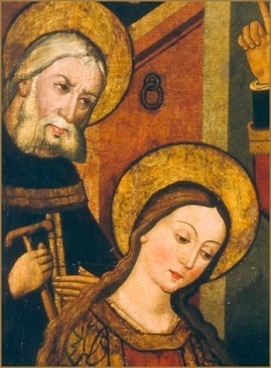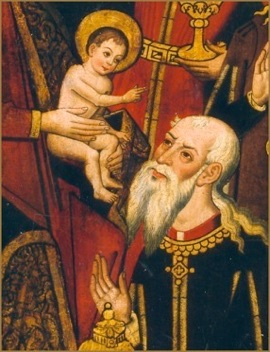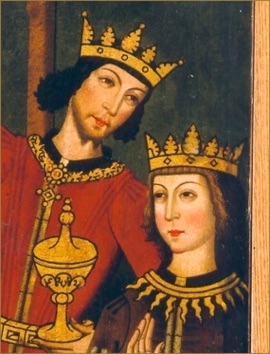Panel
Anonymous Homage of the Magi 1380-1400
Attributed to a Catalan master.
The Catalan master who painted this biblical scene had just about enough room on the long-drawn panel to fit in all the people involved. People or animals standing farther away have been placed higher on the panel than those standing in the foreground, with the effect that the whole picture looks rather two-dimensional. And although we must beware of judging medieval painting by modern standards, we can’t help noting that the stiff and angular folds of the draperies do little to enhance the realism.
The little plants in the lower left corner are the only elements in this painting to look ’real’. In the upper right corner we see the outlines of Bethlehem, not quite the small village as described in the Bible. Although the ox and the ass are not mentioned as witnesses to Christ’s birth in the Bible, they are almost without exception depicted in nativity scenes.
The former is meant to symbolize the converted Jews, while the ass symbolizes the converted pagans. The three kings (magi) who came from the East to worship the baby Jesus carry golden, grail-like cups that contain gold, frankincense and myrrh. One of the magi points to the star that guided them to the manger. Another has humbled himself before the heavenly king by taking off his crown and placing it on the ground. Christ seems to be addressing his royal visitor, for with his right hand he makes the gesture that indicates speech. It is, however, rather unlikely that a baby only a few days old could already speak, so the gesture the child makes should possibly be interpreted as a reference to his being the Word of God incarnate. The painter obviously judged Mary to be more important than Joseph, placing her in the foreground, dressed in expensive clothes, while the carpenter stands at the back, clutching his carpenter’s tools.







